Matador Network's Blog, page 272
July 22, 2023
Spend the Night at These Hotels To Stay Next Door To the World’s Largest Church

Staying the night in the smallest country in the world, Vatican City, would likely be a bucket-list item for many travelers if it were possible. Unfortunately, it isn’t. There are no hotels in Vatican City and you certainly can’t pitch your tent on St. Peter’s Square. However, there are hotels very, very close to the Holy See, some with unparalleled views of St. Peter’s Basilica, the largest church in the world.
Taking a trip to Italy? Check out Matador’s Italy accommodations guides:The 11 dreamiest Airbnbs in ItalyThese dreamy Amalfi Coast Airbnbs are the perfect seaside escapeSkip the Crowds in Rome With a Stay at One of These Luxurious Hotels Next To the ColosseumThe Best Airbnbs Near Lake Como To Live Out Your Italian DreamThese Florence, Italy, Airbnbs put you close to the Duomo and the best of the cityThe Best Airbnbs in Venice, From a Rialto Flat To a San Marco StudioThese 7 Lake Como Hotels Are What Italian Dream Vacations Are Made OfAre there hotels in Vatican City?
There are no hotels within the boundaries of Vatican City. While some claim that Residenza Paolo VI is the only hotel in Vatican City, this is untrue; the hotel’s address is in Rome. That said, Residenza Paolo VI, is probably the closest hotel to the smallest country in the world and the one with the best views of it.
Where are the best hotels near Vatican CityThe best hotels near Vatican CityWe hope you love the Vatican City Hotels we recommend! Just so you know, Matador may collect a small commission from the links on this page if you decide to book a stay. Listed prices are accurate as of the time of publication.
Villa Agrippina Gran Meliá Photo: Expedia
Photo: Expedia Photo: Expedia
Photo: Expedia Photo: Expedia
Photo: Expedia Photo: ExpediaSee more photos
Photo: ExpediaSee more photosVilla Agrippina Gran Meliá is located less than 20 minutes on foot from the entrance to Vatican City. While it’s not the closest hotel to the Holy See, it is the most luxurious. The five-star property is very much like a private oasis in the middle of Rome, with its large Mediterranean garden and seasonal outdoor pools, where comfortable loungers and sofas invite guests to relax. Of course, like any property of this quality, it hosts a fine-dining restaurant, a cocktail bar, a well-equipped 24/7 gym, and a full spa for personalized body treatments or simple sessions in the sauna, steam room, or jacuzzi. All the rooms at the Villa Agrippina Gran Meliá are modern, spacious, and inspire tranquility thanks to the simple decor punctuated with tasteful replicas of Italian paintings. Several of the hotel’s beautiful suites (the Vatican and the Renaissance suites) offer views on the immense dome of St. Peter’s Basilica from their private terraces.
Where: Via del Gianicolo, 3, 00165 Roma RM, Italy
Price per night: From $591
 Photo: Expedia
Photo: Expedia Photo: Expedia
Photo: Expedia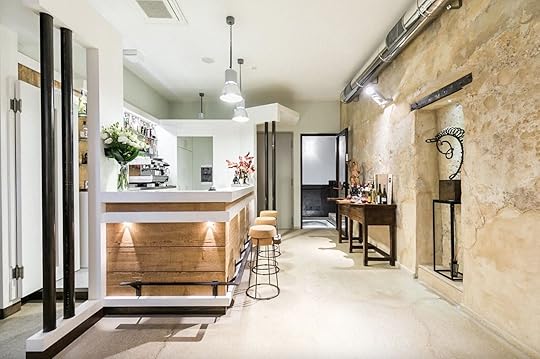 Photo: Expedia
Photo: Expedia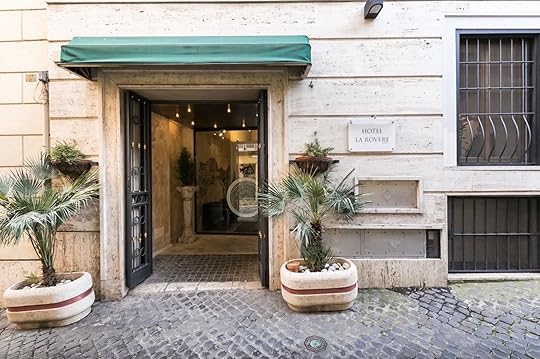 Photo: ExpediaSee more photos
Photo: ExpediaSee more photosHotel La Rovere is a four-star property located only a 15-minute walk away from the entrance to Vatican City and St. Peter’s Basilica. A mix of classic, retro, and modern decor, the 27 rooms at the Hotel La Rovere are spacious, comfortable, and unique — and so are the bathrooms. Request a room with a balcony and a view and you’ll be able to sit on the patio furniture while looking at Rome’s rooftops, including the dome of Basilica of San Giovanni Battista dei Fiorentini. A buffet breakfast is available and there is a bar on site.
Where: Vicolo di Sant’Onofrio, 4 – 5, 00165 Roma RM, Italy
Price per night: From $190
 Photo: Expedia
Photo: Expedia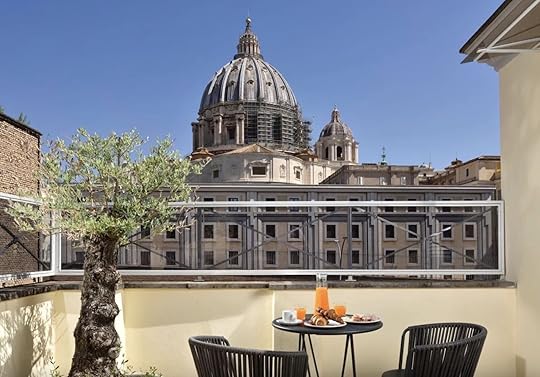 Photo: Expedia
Photo: Expedia Photo: Expedia
Photo: Expedia Photo: ExpediaSee more photos
Photo: ExpediaSee more photosThe Elle Boutique Hotel is so close to Vatican City that guests can almost touch the dome of St. Peter’s Basilica from their room window or balcony. Located just five minutes on foot from the entrance to the smallest country in the world, this four-star property consists of cozy, modern rooms, some of which have a terrace with patio furniture and a jacuzzi from where you guests can admire the million-dollar views. The property has a terrace where guests can relax with a drink from the bar after an afternoon of exploring Rome. WiFi is complimentary and breakfast is available.
Where: Via della Stazione Vaticana, 1, 00165 Roma RM, Italy
Price per night: From $188
 Photo: Expedia
Photo: Expedia Photo: Expedia
Photo: Expedia Photo: Expedia
Photo: Expedia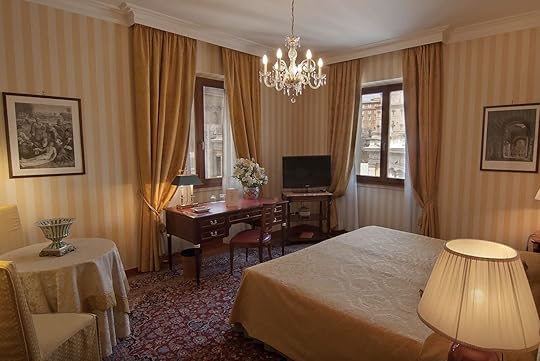 Photo: ExpediaSee more photos
Photo: ExpediaSee more photosLocated just a few minutes on foot from St. Peter’s Square, Residenza Paolo VI is often believed to be the only hotel in Vatican City — but it isn’t. Residenza Paolo VI is in Rome, but so close to the border with Vatican City that it’s easy to think that it is in the Holy See. Because of this amazing location, this property offers guests the best views of St. Peter’s Square, especially from its rooftop terrace. All 35 rooms are decorated in a simple, classic style, but include modern amenities like free WiFi, plasma TVs, and air conditioning. Breakfast is included, there is a bar on site, and it is possible to arrange an airport shuttle.
Where: Via Paolo VI, 29, 00193 Roma RM, Italy
Price per night: From $175
 Photo: Expedia
Photo: Expedia Photo: Expedia
Photo: Expedia Photo: ExpediaSee more photos
Photo: ExpediaSee more photosLess than 10 minutes on foot from St. Peter’s Square, Vatican Style is not a property with a view of Vatican City, but it’s still close enough for you to pop in the world’s smallest country in a matter of minutes. Vatican Style is a highly rated, affordable, and very modern property of only 18 rooms and suites. All the rooms have free WiFi, air conditioning, but only the suites have an in-room jacuzzi. Breakfast is available and so is the shuttle service to and from the airport. 
Where: Via del Mascherino, 46, 00193 Roma RM, Italy
Price per night: From $129
July 21, 2023
The 3 Best Rooftop Bars in Barcelona for Views and Cocktails
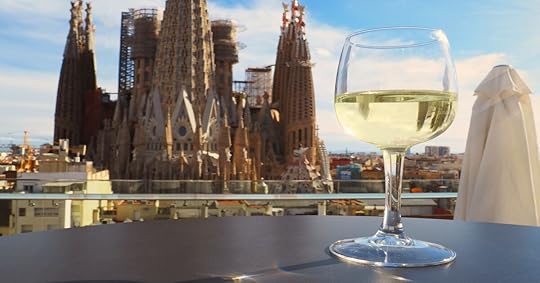
Visiting a rooftop bar in Barcelona is one of the best ways to soak in the city’s atmosphere. Not only do these elevated hotspots provide a panoramic view of Barcelona’s iconic landmarks, including the majestic Sagrada Familia and the shimmering Mediterranean Sea, but they also offer a taste of Barcelona’s thriving culinary scene. Whether you’re savoring a classic Spanish tapas dish or sipping on a refreshing cocktail as the sun sets, a rooftop bar visit encapsulates the essence of Barcelona’s culture. These are the three you need to visit.
RoofTop OhlaRoofTop Ohla at the Ohla Hotel in Barcelona is a blend of luxury, gastronomy, and breathtaking views. This rooftop bar sits atop the Ohla Barcelona hotel, providing a stunning 360-degree view of the city’s architectural marvels. With a menu featuring creative cocktails and gourmet tapas, you get to indulge your taste buds while soaking in the panoramic views. The cherry on top is the glass-walled swimming pool, making Rooftop Ohla a must-visit for those seeking a touch of sophistication in Barcelona.
Hotel ColonThe Hotel Colon rooftop bar’s prime location opposite the Barcelona Cathedral offers unparalleled views of this iconic Gothic structure, making it an ideal spot for taking pictures. Beyond the stunning visuals, the bar boasts a renewed gastronomic offer, featuring traditional cuisine made with local products and an impressive menu of local wines. Whether you’re enjoying a meal or simply sipping on drinks, the combination of delicious fare and the panoramic cityscape makes a visit to the Hotel Colon rooftop bar a must.
The Rooftop at The VictorThe Rooftop at Sir Victor in Barcelona is ideal for anyone looking to experience the city’s cosmopolitan vibe in a stylish setting. This upscale rooftop bar presents an unrivaled view of the iconic Passeig de Gràcia and Gaudi’s Casa Milà. The menu features innovative cocktails and a selection of local and international dishes, all prepared with a modern twist. With its sleek design, ambient music, and a pool that’s perfect for a refreshing dip, the Rooftop at Sir Victor offers a sophisticated and peaceful escape from the hustle and bustle of the city.
Switzerland’s Jungfrau Travel Pass Is a Portal To the ‘Top of Europe, Adventure, and Swiss Tradition’
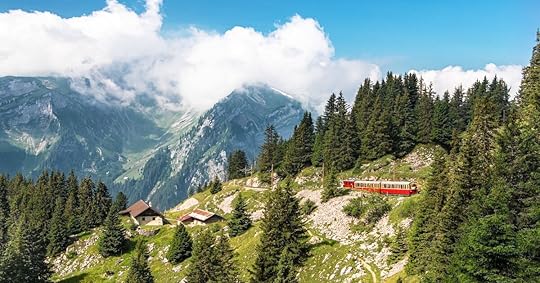
From 11,362 feet, summertime in Switzerland’s Jungfrau region looks like a half-colornized photograph. Peering down from the viewing platform at Jungfraujoch, the mountain saddle that connects the Jungfrau and Mönch peaks in the Bernese Oberlands, you can trace the jagged, piny line where the limestone-and-ice mountains melt into the fertile green valleys below.
Jungfraujoch is the region’s crowning attraction, literally and figuratively. It’s accessed by the highest railway station on the continent, earning it the nickname the “Top of Europe.” But the Jungfrau region, located roughly one hour from the Swiss capital of Bern and three hours from Zurich by train, lays claim to the “top” of other attractions, as well.
From the village of Grindelwald, a tricable gondola connects you to coveted hiking trails and ski slopes, the historic Jungfrau Railway continues on to the “Top of Europe,” and a cable car departing from downtown promises access to the “Top of Adventure” as it cruises toward an Alpine adventure park. From Wilderswil village, a heritage cogwheel train chugs toward a panoramic mountain ridge and, with it, the “Top of Swiss Tradition.” Elsewhere in the region, a 100-year-old funicular ascends above the iconic twin lakes of Thun and Brienz to reach the “Top of Interlaken” for an aerial view of Jungfrau’s most famous resort town.
It’s all connected, impressively, by rail. In fact, the majority of the region’s highlights are only reachable by a network of trains, cable cars, and footpaths, including the car-free villages of Mürren, Gimmelwald, and Wengen. With the all-access Jungfrau Travel Pass, seeing the Swiss Alps has never been more accessible, sustainable, or hassle-free.
About the Jungfrau Travel Pass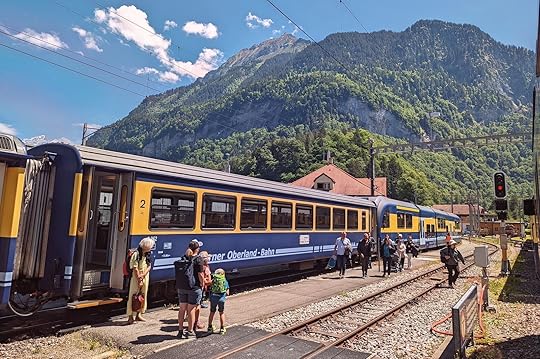
Photo: Ren Design/Shutterstock
If you’re planning to spend more than a couple of days exploring the Jungfrau region, the easiest way to get around is with the Jungfrau Travel Pass.
The Jungfrau Travel Pass gives passholders access to a network of rail systems that connect to the region’s attractions and villages. Passes are valid between three and eight days. Adult tickets range from approximately $220 for a three-day pass to $360 for an eight-day pass. The cost for children ages six to 15 is approximately $35 regardless of the pass duration.
Some of the railways included in the Jungfrau Travel Pass are open year-round while others operate seasonally. Discounted fees for Jungfraujoch excursions are included in the price of the Jungfrau Travel Pass — more on that and the rest of the region’s highlights below.
Highlights of the Jungfrau Travel PassJungfraujoch: The Top of Europe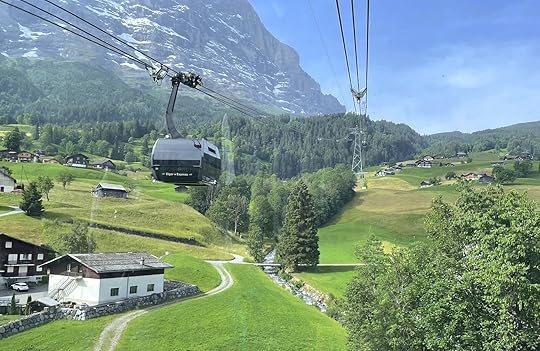
Aboard the Eiger Express en route to the Jungfrau Railway
Photo: Alex Bresler
The journey to Jungfraujoch begins on the Eiger Express gondola at Grindelwald Terminal station. The three-year-old tricable gondola transports riders to Eiger Glacier station in just 15 minutes, an impressive feat considering you gain more than 4,000 feet of elevation as you’re carted past the largest north face in the Alps — that of the Eiger mountain.

Eiger Glacier station, midway to Jungfraujoch
Photo: Alex Bresler
Eiger Glacier station connects to the Jungfrau Railway, which has been transporting visitors to Jungfraujoch since 1912, as well as trails leading to lower-elevation stations such as Kleine Scheidegg if you prefer to tackle some of the trip on foot. Midway through the 30-minute ride on the Jungfrau Railway, you can hop off at Eismeer station inside of the Eiger to learn about the history of the hydroelectric railway and how its mountain tunnels were carved.

The “half-colorized” view from the Sphinx Observatory platform
Photo: Alex Bresler
Once at Jungfraujoch, you’ll find not a single viewpoint but a station with multiple attractions, including an ice palace, two restaurants, an interactive Lindt chocolate shop experience, and the Sphinx Observatory viewing platform where you can marvel at the 15-mile-long Aletsch Glacier, the longest glacier in the Alps. On clear days, it’s said that you can see all the way to Germany’s Black Forest looking north and France’s Vosges Mountains to the south.
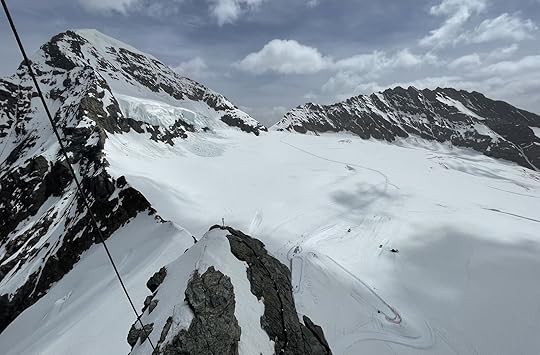
The snowy trail to Mönchsjochhütte
Photo: Alex Bresler
Easier to see is the marching band of hikers below the observation deck navigating a secure piste en route to Mönchsjochhütte, a mountain hut that carries yet another superlative as the highest manned hut in Switzerland. The 45-minute walk is open to all in the summer but only to mountaineers in the winter when the tunnel exit from Jungfraujoch is closed.
Season: Year-round
Tickets: From $92
Across the Lütschine Valley from Jungfraujoch, an Alpine adventure park cascades down the slopes of Schwarzhorn mountain from 7,000-foot-high First station. Compared to the Eiger Express, the First Gondola Cable Car inches toward its terminus from downtown Grindelwald, but what awaits at the top is arguably more exciting than Jungfraujoch.
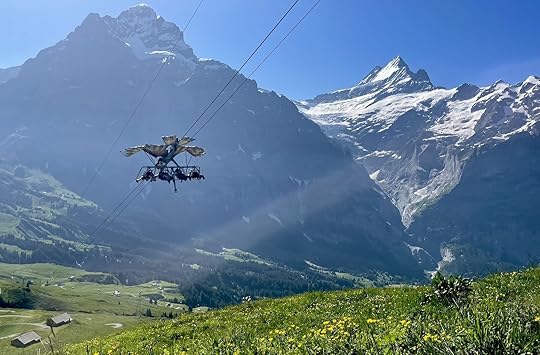
The Superman-style First Glider in action
Photo: Alex Bresler
The cable car makes three stops before arriving at First station, each of which marks the starting point for a different thrill ride. From First, a zip-line-esque Flyer propels riders down a steep cable toward Shreckfield, the second-highest station, at a surprisingly leisurely 50-plus miles per hour. From Shreckfield, a Superman-style flyer called the Glider pulls riders backward toward First before launching them back down a cable at a similar speed. Counterintuitively, the ascent is the most thrilling part of the ride while the latter half of the experience provides an unbeatable bird’s-eye view of the landscape from the eagle-inspired Glider.
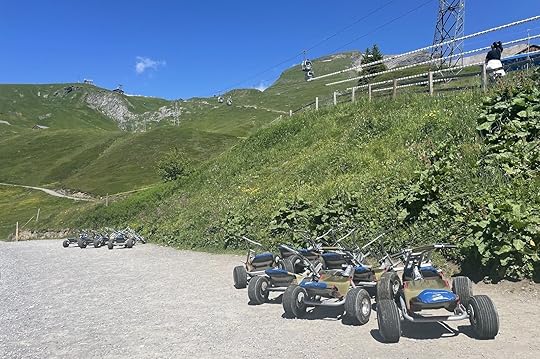
After the Glider, mountain carts await
Photo: Alex Bresler
Back at Shreckfield, it’s time for your first wheeled adventure on a low-to-the-ground, three-wheeled mountain cart. The road is intermittently rocky and steep road, but the steady stream of carters ensures you never pick up too much speed. The mountain cart adventure concludes at Bort station where you can pick up a Trottibike, a hybrid bike-scooter that you ride standing up. The Trottibike path leads from Bort down to Grindelwald where you can return the scooter and take the cable car back up to First for a scenic lunch and stroll along the Cliff Walk that flanks the station, culminating in a viewing platform that extends 150 feet into the open air.
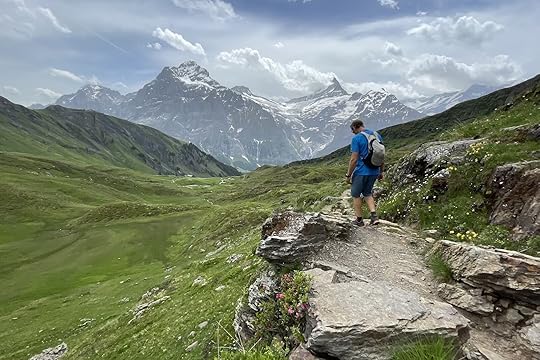
Hiking past Bachalpsee Lake from First station
Photo: Alex Bresler
Those looking for a full day of activities or a standalone hike will also find various trailheads at First station. The hour-long walk from First to Bachalpsee Lake is a nice starting point, with options to continue down the mountain or carry on to the Schynige Platte mountain ridge that’s been dubbed the “Top of Swiss Tradition” on a strenuous 10-mile hike.
Season: Year-round for Flyer and Glider, summer for Mountain Cart and Trottibike
Tickets: From $38 for the cable car, from $58 for the adventure park

The Schynige Platte Railway chugging along
Photo: Maksym Ketsmur/Shutterstock
Schynige Platte is a mountain ridge perched above Wilderswil village, which is located roughly 10 miles from Grindelwald and two miles from Interlaken. It’s possible to hike there in about six hours from First station, but the heart of the Schynige Platte experience is a 50-minute nostalgia ride on a narrow gauge cogwheel train. The Schynige Platte Railway opened a few years before ground broke on the Jungfray Railway in the late 19th century, and to this day, the wooden-benched trains rely on manual directions by railway managers.
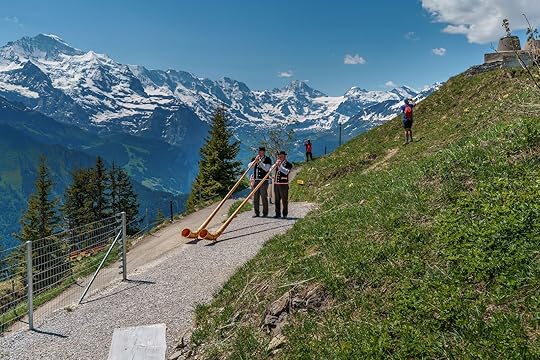
An alphorn concert at Schynige Platte Photo: fritschk/Shutterstock
At Schynige Platte station, riders enter a world of Swiss tradition, starting with daily free alphorn concerts. Musicians donning traditional dress (think lederhosen and dirndls) sound long wooden horns that originated in the Alps as a means of communication between villages between 11 AM and 2 PM near the station, creating the perfect soundtrack for a typical Swiss lunch of rösti (potato hash) or älplermagronen (Alpine macaroni and cheese).
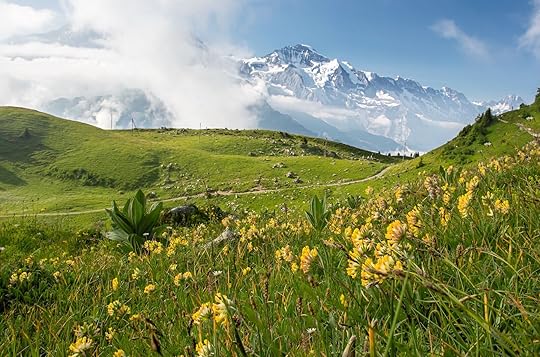
Yellow hawkweed flowers and Eiger mountain at the Schynige Platte botanical garden
Photo: Maksym Ketsmur/Shutterstock
The views from the station are wide and breathtaking, but the prettiest flora is on display in an Alpine garden that showcases some 800 native species. Before you depart Schynige Platte, follow the relatively flat, 30-minute Swiss Flower and Panorama trail to see blooms up close and admiring the vistas from the ridge’s 6,500-foot-high vantage point.
Season: June through October
Tickets: From $35
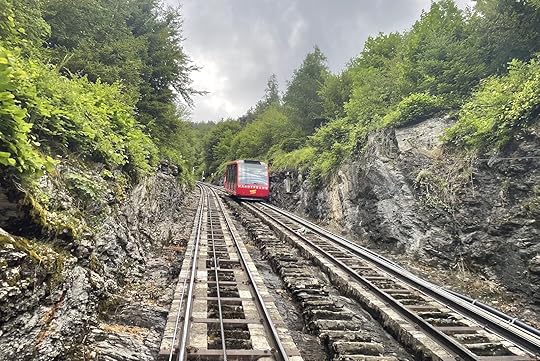
Catching the 100-year-old Harderbahn funicular
Photo: Alex Bresler
Grindelwald First is billed as the “Top of Adventure” in Jungfrau, but the resort town of Interlaken is generally accepted as the “Adventure Capital of Switzerland.” Positioned between the bigggest lake in the Bernese Oberlands, Lake Thun, and fjord-like Lake Brienz, Interlaken is the largest town in the region, with an adventure-sports infrastructure that supports a wider range of adrenaline activities, such as bungee jumping, skydiving, paragliding, and whitewater rafting.
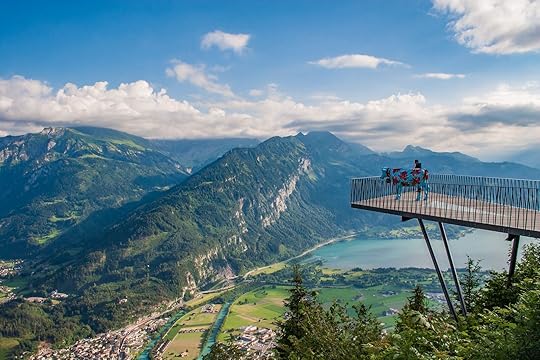
A glimpse of Interlaken and Lake Thun from the viewing platform at Harder Kulm
Photo: Ksenia Molina/Shutterstock
Unless you plan on paragliding, the most expansive view in town lies at the top of the Harderbahn funicular at Harder Kulm, or the “Top of Interlaken.” From the station’s Two Lakes Viewing Platform near the Panorama Restaurant, you can see Jungfrau’s two spectacular lakes and three famous peaks, as well as landmarks such as the Höheweg promenade, Heimwehfluh lookout tower, and 12th-century Schloss Interlaken Castle. (Bonus views of Interlaken and its surrounds await on the hour-long forested Harder Kulm Circular Path.)
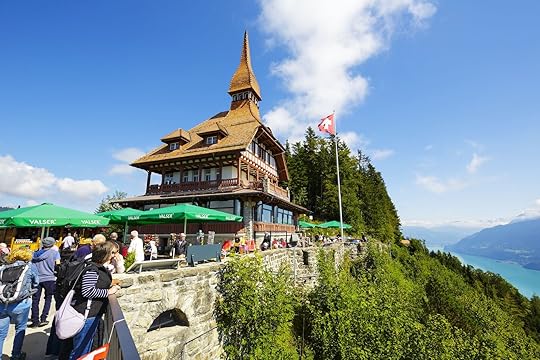
The castle-like Panorama Restaurant at Harder Kulm station
Photo: marekusz/Shutterstock
Charmingly, the restaurant at Harder Kulm also resembles a castle on a hill. It’s a tourist attraction, yes, but also a venue where locals vie to marry every year. Like Schynige Platte, Harder Kulm also stages complimentary Swiss folklore performances from 6:30 to 8:30 PM between June and September — a perfect pairing with sunset views and an evening aperitif.
Season: April through November
Ticket: From $23
There’s no bad choice when it comes to picking a base in the Jugfrau region thanks to its impeccable rail service and the ease of movement with the Jungfrau Travel Pass. Some accommodations, on the other hand, provide more comfort and convenience than others. These are some of the best picks in the region, from idyllic Grindelwald to iconic Interlaken and après-ski-favorite Mürren, the highest-elevation ski resort in the Bernese Oberlands.
We hope you love these hotels in the Jungfrau region! Just so you know, Matador may collect a small commission from the links on this page if you decide to book a stay. Listed prices are accurate as of the time of publication.
Bergwelt Grindelwald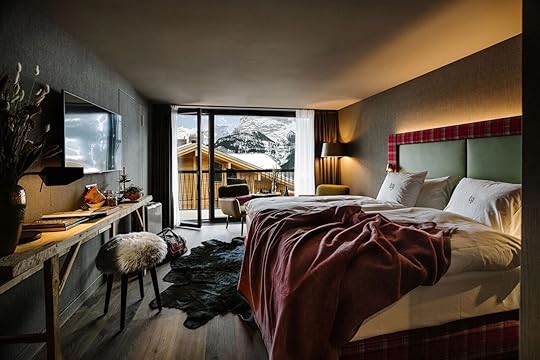
Photo: Expedia
Opened in 2021, the 90-room Bergwelt Grindelwald is one newer hotels in the Jungfrau region, and it shows in its balance between modern luxury and Alpine charm. The downtown location is hard to beat, just a few minutes on foot from the First Gondola Cable Car. To make the most of your stay, take advantage of the Fire & Ice Spa, but be sure to book sauna sessions in advance.
Where: Bergwelt 4, 3818 Grindelwald, Switzerland
Price per night: From $215

Photo: Expedia
To borrow a phrase from the Jungfrau region, the Victoria-Jungfrau Grand Hotel & Spa is the “top” of luxury in Interlaken. The property looks as regal as the Schloss Interlaken Castle, which is less than 10 minutes away on foot along the Höheweg promenade. The hotel’s five-star service also extends to experiences ranging from waterfall and cave visits to paddelboarding and wine tasting, not to mention excursions to all of the “top” attractions in the region.
Where: Victoria Jungfrau Grand Hotel, Höheweg 41, 3800 Interlaken, Switzerland
Price per night: From $640
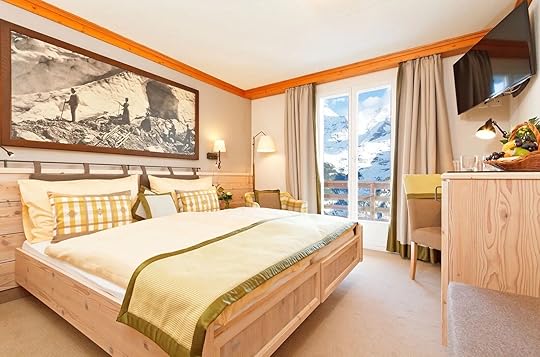
Photo: Expedia
If you’re looking for a high-elevation stay in the Jungfrau region, particularly during the snowy season, Hotel Eiger Mürren is an excellent choice. The hotel has the look and feel of a quintessential Alpine chalet — including access to some of the best slopes around. Even if you’re not a skier, the mountains views from balconied rooms are unparalleled. 
Where: Ägerten 1079C, 3825 Mürren, Switzerland
Price per night: From $230
Can’t Afford a Night in a Palace? These Luxurious Hotels Near Versailles Might Be the Best Substitutes

You can’t come to Paris and skip Palace of Versailles — it’s a must-see. But you got to do it right. Because the palace is outside the city, requiring you to take public transport for about one hour to get there, and because it’s a very busy place, staying nearby is a great idea to make your visit easier. By booking a hotel near the palace, you can purchase the first slot for the timed-entry ticket, be at the gates before everyone else, and spend as much time as you wish inside the estate (maybe even catch a fountain show) without having to worry about getting the train back into Paris. But ordinary hotels won’t do. What you want is the stuff of royalty. Luckily, there are plenty of luxurious Versailles hotels to put you in a palatial mood.
Taking a trip to France? Check out Matador’s accommodation guides to the best places to stay:9 dreamiest Airbnbs in the South of FranceThe most beautiful Airbnbs in ParisThese Airbnbs Near the Eiffel Tower Offer Incredible Views of the Entire CityThe Finest Luxury Hotels Near the Eiffel Tower With Incredible Views of ParisThe 9 Most Exciting Boutique Hotels in ParisWhere are the best Versailles hotels located?The best Versailles hotels
We hope you love the Versailles hotels we recommend! Just so you know, Matador may collect a small commission from the links on this page if you decide to book a stay. Listed prices are accurate as of the time of publication.
Waldorf Astoria Versailles Photo: Expedia
Photo: Expedia Photo: Expedia
Photo: Expedia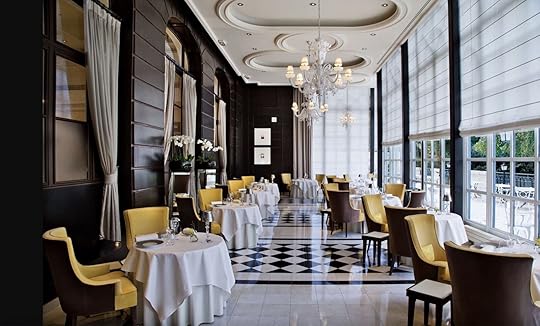 Photo: Expedia
Photo: Expedia Photo: ExpediaSee more photos
Photo: ExpediaSee more photosThe Waldorf Astoria Versailles is a luxury hotel that consists of two buildings: the five-star Trianon Palace and the four-star Pavillon du Trianon, both of which offer beautiful accommodations and amenities. The Trianon Palace consists of 85 rooms and 15 suites and has the advantage of providing guests with views of Versailles’ stunning park. It is also the building where the pool, the gourmet restaurants, the bar, and the phenomenal Guerlain spa are located. The Pavillon du Trianon has 99 rooms, overlooks the hotel’s gardens, and is linked to the Trianon Palace by a pathway, so it’s very easy and quick to get from one to the other. The rooms and suites are decorated in the same elegant, comfortable, and simple way in both buildings, making the choice between them even trickier. But no matter which one you choose, you’ll be staying in the lap of luxury just 10 minutes on foot from the entrance to the Palace of Versailles.
Where: 1 Bd de la Reine, 78000 Versailles, France
Price per night: From $370
 Photo: Expedia
Photo: Expedia Photo: Expedia
Photo: Expedia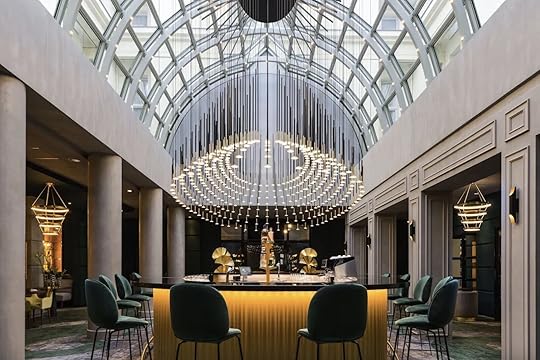 Photo: Expedia
Photo: Expedia Photo: ExpediaSee more photos
Photo: ExpediaSee more photosThe highest-rated Versailles hotel on Expedia, the Hôtel Le Louis Versailles Château MGallery is located a couple of minutes’ walk from the Cour d’Honneur, the spot where visitors line up to enter the palace. But the property’s ideal location is only its second-best asset after its beautiful interior decor. This jewelery box of a hotel is undeniably modern, but it is not cold or minimalist like so many other modern properties out there; instead it has warm-colored wooden floors, sparkling chandeliers and mirrors, soft and light-catching velvet fusnishings, and a palette of deep and luxurious golds, greens, and greys that make the space feel intimate and lavish. If you want to feel like you’re staying in a palace, this hotel will certainly do the trick.
Where: 2 Bis Av. de Paris, 78000 Versailles, France
Price per night: From $211
 Photo: Expedia
Photo: Expedia Photo: Expedia
Photo: Expedia Photo: Expedia
Photo: Expedia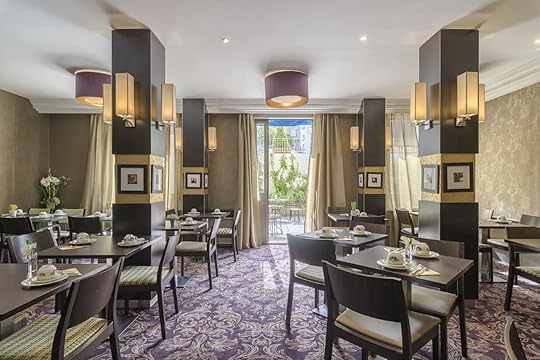 Photo: ExpediaSee more photos
Photo: ExpediaSee more photosThe Hôtel Le Versailles is a four-star property located steps away from the visitor entrance to the palace, making it a very convenient place to stay for those eager to spend one or two days exploring the estate. In fact, it is the closest hotel to the palace! While the property is modern, with elegant and contemporary furnishings, there are many classic touches that remind guests of the Palace of Versailles, including heavily patterned textiles, gold-colored details, and large, blown-up photographs of the palace and its gardens. There is a bar and a cozy terrace where guests can relax after a day of visiting the estate, and while there’s no restaurant on side, there’s a buffet breakfast available every morning.
Where: 7 Rue Sainte-Anne, 78000 Versailles, France
Price per night: From $165
 Photo: Expedia
Photo: Expedia Photo: Expedia
Photo: Expedia Photo: Expedia
Photo: Expedia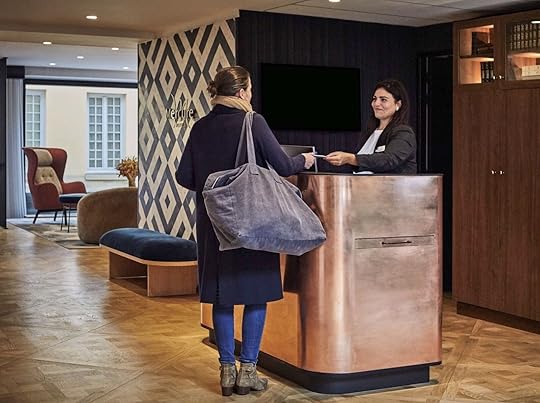 Photo: ExpediaSee more photos
Photo: ExpediaSee more photosLocated 15 minutes on foot to the palace and less than a 10 minutes’ walk to the Versailles Rive Gauche train station (where the RER C train will get you to Paris), the Hôtel Mercure Versailles Château is an affordable and modern property for short-term visitors. With only 60 rooms, the hotel, which was fully renovated with taste in 2020, is on the small side, but provides guests with everything they may need, from room service to a lovely breakfast buffet, WiFi, laundry service, a bar, and air conditioning. The decor in this property is simple, comfortable, with modern furnishings and uplifting touches of colors and patterns.
Where: Angle, 19 Rue Philippe De Dangeau, Rue Montbauron, 78000 Versailles, France
Price per night: From $138
 Photo: Expedia
Photo: Expedia Photo: Expedia
Photo: Expedia Photo: Expedia
Photo: Expedia Photo: ExpediaSee more photos
Photo: ExpediaSee more photosThe Hôtel Des Lys is a small, three-star hotel of 39 comfortable and modern rooms. It is located only 15 minutes from the palace and 10 minutes from the Versailles Rive Gauche train station. While the rooms are simple and without much frills, they are modern, spotless, and the art displayed was carefully chosen to remind guests of the big local attraction: the Palace of versailles. A daily breakfast buffet is available, and there is free Wifi.
Where: 16 Rue Richaud, 78000 Versailles, France
Price per night: From $133
 Photo: Expedia
Photo: Expedia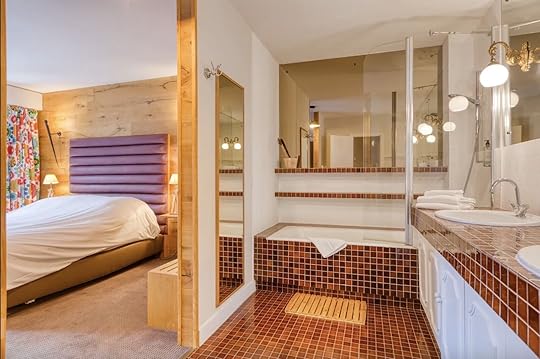 Photo: Expedia
Photo: Expedia Photo: Expedia
Photo: Expedia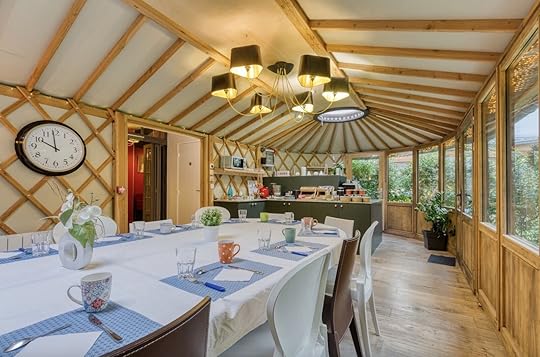 Photo: ExpediaSee more photos
Photo: ExpediaSee more photosThe Hôtel du Jeu de Paume is a very small, charming property of 16 rooms located just 10 minutes from the palace on foot. The affordable hotel looks more like a large and fun family home than a hotel, and is reminiscent of a contemporary alpine chalet, with modern furnishings, bright touches of color, and warm wood accents. The common areas — especially the lounge area and its fireplace — are simple and cozy, making guests feel comfortable instantly. Breakfast is available, there is free WiFi, and you’ll find a king-size bed in every room. 
Where: 5 bis Rue de Fontenay, 78000 Versailles, France
Price per night: From $130 
Moraine Lake Is Banff National Park’s Turquoise Treasure
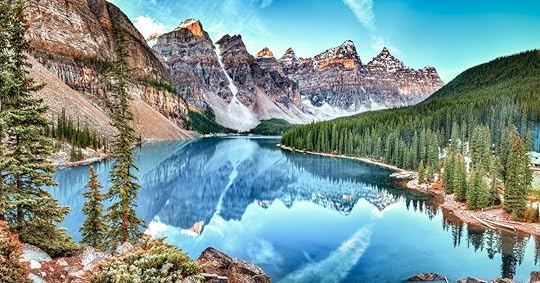
If you’re an avid traveler, you know that Canada has some of the most stunning natural landscapes in the world. One of the most beautiful places in Canada, even during the chillier months, is Moraine Lake in Banff National Park. This glacially-fed lake, located in the Valley of the Ten Peaks, offers an unforgettable experience filled with breathtaking vistas, adventure, calm, and the “candleice” that floats peacefully alongside your kayak.
@matadornetwork #Canoeing through #candleiceMoraine Lake, located in Banff National Park, is known for its stunning turquoise waters and picturesque surroundings

@Madison Elrick
#MoraineLake in #BanffNationalPark, Canada #canadtok #oddlysatisfying #oddlysatisfyingtiktok #canadatravel ♬ original sound – Matador | Travel + Adventure
The visit to Moraine Lake begins with the view of its waters, a vibrant shade of turquoise that changes in intensity through the summer as the glaciers melt. This natural phenomenon, coupled with the surrounding towering mountains and their snowy peaks reflected in the still waters, creates a surreal scene. It’s no wonder this landscape was once featured on the back of the Canadian $20 bill.
But Moraine Lake isn’t just for admiring from afar. It offers various recreational activities to immerse yourself in its beauty. Rent a kayak and paddle across the serene waters, or take a leisurely stroll along the lakeshore. For the more adventurous, there are numerous hiking trails, like the Larch Valley trail, which offer panoramic views of the area’s spectacular scenery. One of the most popular hikes is the Rockpile Trail. This relatively easy trail, with a slight elevation, leads to the top of a natural dam. The viewpoint from here, often referred to as the “Twenty Dollar View,” is arguably the best spot to photograph the lake and its 10 surrounding peaks.
The best time to visit is from late June to early September, because during this time, the water level is at its peak and the snow has melted off the peaks, giving you a spectacular view. You’ll definitely want to visit during the day so you can see the lake at its most colorful. July and August are the busiest, so try to avoid these months if possible and visit in June or September. Remember to check weather forecasts and road conditions as the park roads can be closed with wildlife activity and heavy snow throughout the year.
Explore Banff National ParkBut the lake is just one small part of the broader natural wonders of Banff National Park. Nature enthusiasts could easily spend weeks exploring the park’s vast wilderness on leisurely walks or challenging treks, each offering stunning views of mountains, lakes, and forests. The park’s lakes (like Moraine) provide opportunities for canoeing and kayaking, while the hot springs offer a chance for relaxation. Wildlife lovers can look out for the diverse species that call the park home. For those seeking even more adventure, there’s glacier walking, mountain biking, and of course, the skiing the park is famous for.
These Reykjavik Airbnb Rentals Make for the Perfect Iceland Basecamp

Reykjavik is a great tourist destination for those looking to explore the beauty of nature and experience unique culture. It’s located in Iceland, an island nation full of lush landscapes and spectacular sights. Reykjavik also offers many fun activities like whale watching, geothermal spas, and Northern Lights tours. With its vibrant nightlife and arts scene, Reykjavik is a great place to explore cultural gems and have an unforgettable experience. These are the best Airbnbs in Reykjavik.
Traveling to Iceland? Check out Matador’s Iceland accommodations guides: Jaw-dropping Iceland Airbnbs for a bucket list summer vacation 3 Airbnbs in Selfoss, Iceland where you can see the Northern Lights This lakeview retreat Airbnb is the ideal way to experience’s Iceland’s natural beauty Watch the Northern Light’s from this Iceland Airbnb’s geothermal hot tub
We hope you love the Airbnb Reykjavik vacation rentals we recommend! Just so you know, Matador may collect a small commission from the links on this page if you decide to book a stay. Listed prices are accurate as of the time of publication.
Enormous, cabin-like villa property just 15 minutes from downtown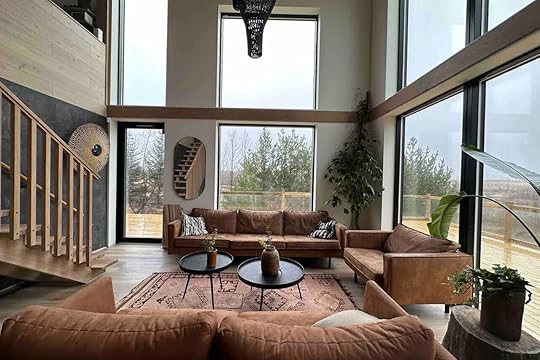 Photo: Airbnb
Photo: Airbnb Photo: Airbnb
Photo: Airbnb Photo: Airbnb
Photo: Airbnb Photo: Airbnb
Photo: AirbnbSee more photosThis enormous, modern cabin-like villa property is out in nature away from the light pollution of the city center (making for great stargazing and the chance to see the northern lights) but just 15 minutes away from the city’s excitement. Minimalist decor with a color scheme of Earth tones matching the outdoor landscape brings the outdoors inside, complemented by the large windows letting in an abundance of sunlight during the day. Highlights of this property include access to a sauna and naturally warm, geothermal waters right on-site, outside — and luxurious amenities including a spacious center island in the kitchen and an enormous soaking tub in the clean, chic bathroom.
Ten guests, four bedrooms
Price: $1,153 per night
 Photo: Airbnb
Photo: Airbnb Photo: Airbnb
Photo: Airbnb Photo: Airbnb
Photo: Airbnb Photo: Airbnb
Photo: AirbnbSee more photosThis newly remodeled, bright, stylish, and minimalist-decorated apartment is centrally located — boasting easy access to the best spots in downtown Reykjavík from the peace of a calm building. It feels like the best of both worlds for travelers who want to have fun out on the town before settling down. Exposed concrete walls and tones of grays, blacks, and whites in the furniture create a sense of muted tranquility within the space. The open floor plan features a large bedroom with a comfortable bed connected to a fully equipped kitchen for cooking, and a large living room space for lounging.
Two guests, one bedroom
Price: $334 per night
 Photo: Airbnb
Photo: Airbnb Photo: Airbnb
Photo: Airbnb Photo: Airbnb
Photo: Airbnb Photo: Airbnb
Photo: AirbnbSee more photosThis well-equipped one-bedroom apartment in the heart of the city feels like a charming spot with easy access to numerous restaurants, bars, shops, the harbor, and the bus station. The light-filled space features an open floor plan — including a modern kitchen, a living room, and a bedroom. There’s a king-sized bed in the bedroom and in the living room, the sofa bed can sleep up to two more people.
Three guests, one bedroom
Price: $218 per night
 Photo: Airbnb
Photo: Airbnb Photo: Airbnb
Photo: Airbnb Photo: Airbnb
Photo: Airbnb Photo: Airbnb
Photo: AirbnbSee more photosThis property is in the heart of the city, just minutes away from the main shopping street, and walkable to numerous awesome attractions. There’s a spacious bedroom, a large kitchen, and a comfortable living room outfitted with all the amenities a traveler might need. Take in the views of the harbor from the large window in the living room, which lets in plenty of natural light — and admire the modern furnishings, which include stylish furniture and eclectic art.
Four guests, one bedroom
Price: $198 per night
 Photo: Airbnb
Photo: Airbnb Photo: Airbnb
Photo: Airbnb Photo: Airbnb
Photo: Airbnb Photo: Airbnb
Photo: AirbnbSee more photosThis compact and quiet tidy fourth-floor studio features easy, walkable access to numerous nearby attractions. It’s located at the rear of the building and offers visitors a clean and bright space to relax in between adventures with laundry facilities and modern furnishings.
Two guests, one bedroom
$154 per night
 Photo: Airbnb
Photo: Airbnb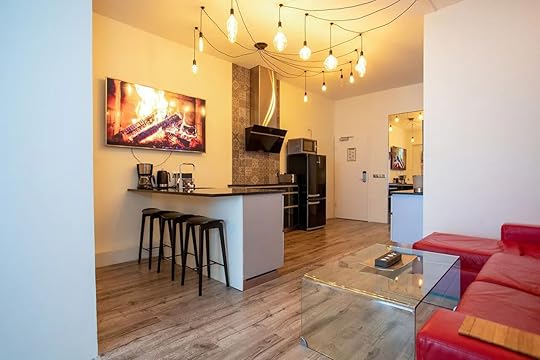 Photo: Airbnb
Photo: Airbnb Photo: Airbnb
Photo: Airbnb Photo: Airbnb
Photo: AirbnbSee more photosThis extra-large studio is located on Main Street in the city center of Reykjavik with easy access to dozens of shops, restaurants, bars, cafes, and numerous popular tourist sites. It’s decorated in warm wooden hues featuring a contemporary design with modern furnishings. Guests will have access to a fully equipped kitchen and full bathroom and can rest in one of the king-sized beds, on the double sofa bed, or on two single beds. There’s even access to laundry facilities, at no extra cost.
Three guests, one bedroom
Price: $206 per night
 Photo: Airbnb
Photo: Airbnb Photo: Airbnb
Photo: Airbnb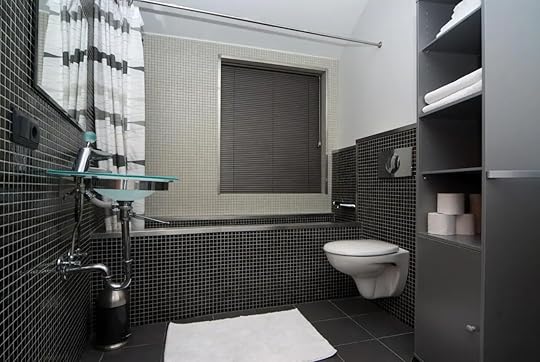 Photo: Airbnb
Photo: Airbnb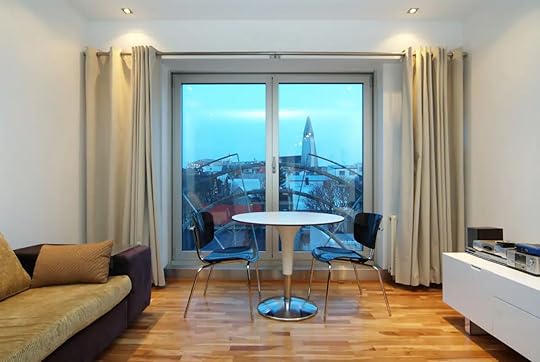 Photo: Airbnb
Photo: AirbnbSee more photosThis stunning penthouse apartment encompasses the top two floors of a newer building on Laugavegur — a main shopping street in the city. Downstairs, guests will have access to a bathroom featuring a large bathtub and shower. There’s also a kitchen outfitted with everything needed to cook a tasty meal including a refrigerator, microwave, stove, toaster, dishwasher, and even tableware. The downstairs also encompasses the living room space with its 3-seater sofa, large TV, and a big window facing south with views of Hallgrimskirkja, a main landmark of Reykjavik. Upstairs, there’s the bedroom and a balcony which also offers great views of the city.
Four guests, one bedroom
Price: $293 per night
 Photo: Airbnb
Photo: Airbnb Photo: Airbnb
Photo: Airbnb Photo: Airbnb
Photo: Airbnb Photo: Airbnb
Photo: AirbnbSee more photosThis stylish city-center studio apartment sits in the center of Reykjavik at the end of the main street — but feels like a peaceful place to set as a home base on a visit to the city. The decor has a vibrant and bohemian feeling, with plenty of natural light and a sprinkling of living plants. There’s a small kitchen that is fully equipped for cooking meals and features a dishwasher. The bedroom/living room space is equipped with a large TV and a full-sized bed, and there’s even an outdoor patio for getting some fresh air.
Two guests, one bedroom
Price: $116 per night
 Photo: Airbnb
Photo: Airbnb Photo: Airbnb
Photo: Airbnb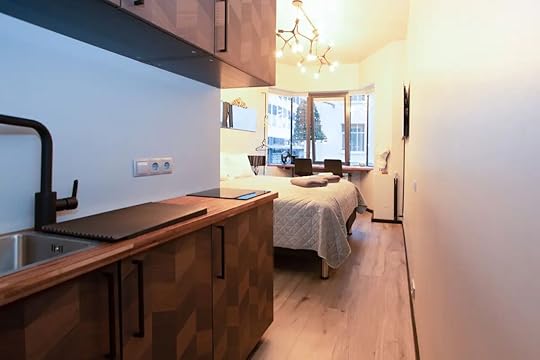 Photo: Airbnb
Photo: Airbnb Photo: Airbnb
Photo: AirbnbSee more photosThis stylish, compact first-floor studio apartment features a small kitchenette for cooking with a stove, a fridge, and a microwave, a comfortable bed, and awesome views from the bay window out over the Main Street of Reykjavik for fantastic people-watching. It’s located on Main Street, with easy walking access to a variety of attractions including restaurants, bars, and shops.
Two guests, one bedroom
Price: $185 per night
It’s widely agreed the best area to stay (especially for new visitors) is Miðborg (Midborg), which is the downtown neighborhood of the city. This neighborhood is highly walkable and there are many shops, restaurants, and tourist attractions to explore in a small radius.
Is it better to stay in Keflavik vs Reykjavik?Keflavik, which is 20-30 minutes away from Reykjavik by car, is closer to the airport, the Blue Lagoon, and peninsula attractions — but most travelers traditionally prefer staying in Reykjavik to be in close proximity to everything.
How many days is enough for Reykjavik?It’s recommended to spend at least four days in Reykjavik in order to fully explore.
What does Reykjavik mean in Icelandic?Reykjavik directly translates to “smokey bay” or “bay of smoke with “Reykur” meaning smoke and Vik meaning “bay.”
Why is Reykjavik named that?This name is said to be inspired by the steam rising from the hot springs and creating a smokey appearance to the early settlers.
Is Reykjavik, Iceland, expensive?Yes, Reykjavik is an expensive city and Iceland is an expensive country compared to many other destinations in Europe. But there are plenty of free and affordable things to do in town.
Can I see the northern lights in Reykjavik?Yes, is possible to see the Northern Lights in Reykjavik. The best time to see the northern lights in Reykjavik is from late August to mid-April. During this period, you can expect clear skies and long dark hours ideal for spotting the aurora borealis. The peak season for seeing the northern lights starts around October and ends in March, with some of the clearest nights occurring during these months 
Sleep Over and Under the Ocean at These Five-Star Maldives Resorts

Maldives resorts offer an extraordinary experience in one of the world’s most exclusive destinations. Known for its pristine white sandy beaches, crystal-clear turquoise waters, and vibrant coral reefs, the Maldives is home to many luxurious resorts, private villas, overwater bungalows, beachfront accommodations, and other secluded hideaways. Expect impeccable service, world-class dining, and a wealth of leisure activities, including snorkeling, diving, and spa treatments ensuring a memorable and indulgent stay on the archipelago.
We hope you love the Maldives resorts we recommend! Just so you know, Matador may collect a small commission from the links on this page if you decide to book a stay. Listed prices are accurate as of the time of publication.
Conrad Maldives Rangali Island Resort@epic.stays This underwater suite is 16 feet below sea levelThe Muraka Suite at the Conrad #Maldives
@michutravel #luxuryhotel #uniquestay #underwaterhotel #maldiveshotel #traveltiktok ♬ The Little Mermaid (Marimba Remix) – Harry Goes Boom!
See more photos
Designed by architect Ahmed Saleem, this luxurious suite is located 16 feet underwater and sleeps nine. With its floor-to-ceiling windows, the primary bedroom offers 360 views of the marine life of the Maldives. The luxury amenities are not limited to the chambers, there’s a separate observatory with underwater views, an infinity pool, butler, and personal chef.
The retreat is set between two separate islands connected by a bridge, with unparalleled views of the Indian Ocean. Pack your finest resort wear as Conrad Maldives Rangali is popular with celebrities such as the Kardashians. Pop on a lottery ticket as the cost of staying here can vary widely depending on the type of accommodation chosen. And if you don’t opt for the underwater suite, you can dine with the fishes five meters below the surface at their restaurant, Ithaa.
Conrad Maldives Rangali Island Resort : Rangali Island Alifu Dhaalu Atoll, 20077, Maldives
Price per night: $840
Book NowThe Grand Park Kodhipparu@epic.stays This overwater #villa in the #Maldives has a glass floor featureGrand Park Kodhipparu
@catchagypsea #traveltiktok #maldivestravel #luxuryhotel ♬ original sound – DJ R-LO | The Peoples DJ
See more photos
The Grand Park Kodhipparu Resort is a luxurious one-island-one-resort destination conveniently accessible via a 20-minute speedboat ride from Male, the capital of the Maldives. The resort features a collection of 102 overwater villas and 18 beach villas. Those over the water feature modern furnishings, private pools, and direct access to crystal-clear waters. There is also a range of activities on the property, including cruises on traditional Maldivian fishing boats, banana boat riding, snorkeling, diving, and a bunch of other water sports. As for the dining options, the resort offers various restaurants and bars for guests to try. The resort’s main restaurant, The Edge, looks out over the ocean with live cooking stations.
The Grand Park Kodhipparu : Kodhipparu, 08121, Maldives
Price per night: $469
Book NowThe Four Seasons Resort Maldives at Kuda Huraa@epic.stays You can expect to pay around $1300 USD/night for a suite like this at theFour Seasons Kuda Huraa in the Maldives
@pilotluana #maldiveshotelguide #traveltiktok #luxurytravel #traveltok #maldiveshotel ♬ Waves – Robin Schulz Radio Edit – Mr. Probz
See more photos
The Four Seasons Resort Maldives at Kuda Huraa features beautifully designed beachfront and overwater villas, allowing guests to choose their preferred accommodation style. Amenities are first class too and up to the highest standard you’d expect from the Four Seasons. Relax with a treatment at the sumptuous spa, embark on snorkeling or diving adventures to explore vibrant coral reefs and swim with manta rays and whale sharks, or participate in water sports such as surfing and paddleboarding. The resort also offers various dining choices, including beachfront restaurants and intimate dinner sunset cruises.
he Four Seasons Resort Maldives at Kuda Huraa : Kuda Huraa North Malé Atoll, 20097, Maldives
Price per night: $800
Book NowSiyam World@epic.stays Room tour of the Reef Villa with Pool + Slide atSiyam World #Maldives
IG: @diana_silva__ #maldivestok #luxurytravel #villatok #uniquehotels #hotelfinds #roomtour ♬ love nwantinti (ah ah ah) – CKay
See more photos
Siyam World has many stunning accommodations, each exuding elegance and comfort on Dhigurah in the Noonu Atoll. The beach, ocean, and lagoon villas have stunning tropical views, and 65 come with private pools. Siyam World has many on-site activities and amenities, from a floating water park, thrilling water sports like jet skiing and parasailing to relaxing spa treatments and yoga classes.
Siyam World : Maadhoo, Dhigurah, 20066, Maldives
Price per night: $670
Book NowGili Lankanfushi@epic.staysGili Lankanfushi in the #Maldives
IG: @flywithemil #traveltiktok #maldivestiktok #vacationmode ♬ sonido original – alvarezmariana
See more photos
The Gili Lankanfushi Resort is located on its private island in the Maldives accessible via a short 20-minute boat ride from Malé International Airport. This secluded resort gives off Castaway vibes and has spacious beachfront villas or overwater bungalows, offering stunning views and direct access to the pristine white sandy beaches or turquoise lagoons. The 45 overwater villas are built with sustainable and recycled materials. Marine life is visible from the jetties, but guests join in and enjoy on-site activities such as snorkeling and diving. There’s also windsurfing, or kitesurfing, or guests can settle for something more relaxing like spa treatments or yoga and meditation sessions.
Gili Lankanfushi : Lankanfushi Island, North Malé Atoll Republic of Maldives, Maldives
Price per night: $1,254
Book NowThe Anantara Kihavah Resort@epic.stays See through bathtub atAnantara Kihavah Villas in the #Maldives
@jeremyaustiin #luxurytravel #luxuryhotel #traveltiktok #visitmaldives #maldiveshotel ♬ kiss it better x i was never there – xxtristanxo
See more photos
The Anantara Kihavah Resort in the Maldives is known for offering a truly extraordinary and exclusive experience. Thanks to its out-of-this-world location on the northern Baa Atoll, there’s no shortage of marine wildlife adventures. Overwater villas with private pools offer direct access to the vibrant coral reefs. As do the see-through bathtubs that look directly into the sea below. There’s also a suite with an outdoor bed allowing guests to stargaze and panoramic views of the Indian Ocean. There are six bars and restaurants at Anantara Kihavah, including an underwater restaurant where guests can dine surrounded by the atoll’s mesmerizing marine life.
The Anantara Kihavah Resort : Kihavah Huravalhi Island Baa Atoll, 20215, Maldives
Price per night: $1,465
Book NowSoneva Jani Maldives@visit Nothing better than waking up to a floating breakfast on your balcony#SonevaJaniMaldives @AKSHAM #sonevajani #visitmaldives #floatingbreakfast #summervibes ♬ My Girl Wukileak – wüki
See more photos
Soneva Jani’s overwater villas offer a range of features that really set this resort apart from others on the archipelago. These spacious villas are elegantly designed, with private pools, outdoor decks, and direct access to crystal-clear waters. From retractable roofs in the master bedrooms for stargazing to waterslides that connect the upper floors to the lagoon below, every detail is designed to create a very fun and unforgettable vacation. 
Soneva Jani Maldives : Medhufaru Island, Manadhoo, Maldives
Price per night: $2,400
Book NowMore like thisBeaches and IslandsHow To Go Island Hopping in the Maldives for a Sun-Soaked GetawayJuly 20, 2023
North Carolina’s 85-Mile Crystal Coast Is the Perfect Destination for Wildlife Viewing, Birdwatching, and Exploring Pristine Beaches
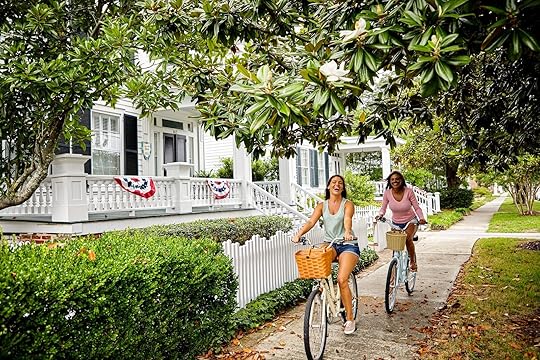
The Crystal Coast, a beautiful 85-mile stretch of beaches on the southern Outer Banks of North Carolina, is a treasure trove of attractions and activities. This region includes several distinct communities such as Atlantic Beach, Beaufort, Pine Knoll Shores, Emerald Isle, Morehead City, and Cape Lookout, each offering its own charm and appeal. A trip to North Carolina’s central stretch of coastline gives you easy access to pristine beaches, top diving destinations, wildlife (including wild horses, sea turtles, dolphins, and more), and plenty of areas perfect for when you want to do nothing more than kick back and relax with a drink and a good meal.
Plan your visit at the right time and you’ll come across a music festival or two, though there’s truly never a bad time to visit in the warmer months.
Getting outdoors along North Carolina’s Crystal Coast
Photo: Crystal Coast Tourism Authority
The best way to experience Crystal Coast is to immerse yourself in the outdoors. Whether you want a chill day laying out on the beach or would rather crank up the adventure with jet skis or a UTV ride, you’ll find exactly what you’re looking for here.
Hike Fort Macon State ParkBased around a restored fort from before the Civil War, you can spend some time learning about the fort’s history and the surrounding nature before heading out to explore the nearly five miles of trails here. Like elsewhere along the Crystal Coast, wildlife is abundant. Dolphins can be spotted from the swimmable beach, and hikes run though a salt marsh and dunes where more than 300 species of bird reside. Needless to say, you’ll want to bring your binoculars with you if you’re a birdwatcher.
Fort Macon State Park: 2303 E Fort Macon Rd, Atlantic Beach, NC 28512
Take a ferry ride to Cape Lookout National Seashore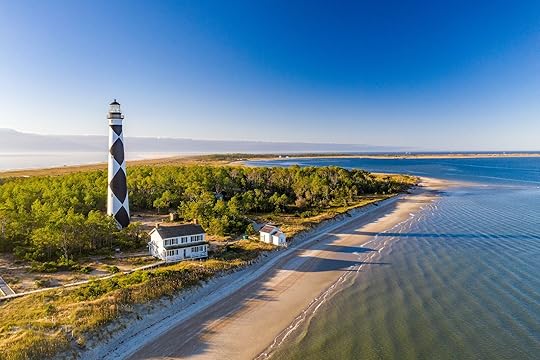
Photo: Crystal Coast Tourism Authority
Taking a boat to Cape Lookout is one of the best ways to experience the magnitude of the coast and enjoy some wildlife spotting along the way and when you arrive. Cape Lookout National Seashore consist of the barrier islands about three miles from the mainland. This is where the horses reside on Shackleford Banks and they tend to get much of the attention from visitors, but there’s also a notable lighthouse to check out (though it’s undergoing renovations until 2025), historic villages, and plenty of opportunities for fishing, birding, seeing protected wildlife, and shelling. For an extra special experience, you can camp out right on the beach and stargaze your way through the night (Cape Lookout is an International Dark Sky Park) knowing more adventures lie ahead the next day. Just note that beach camping is a barebones experience here with no running water or amenities, so you’ll need to bring everything in with you and take everything back out when you leave.
Cape Lookout National Seashore: Ferries leave from various locations depending on destination
Explore Cape Lookout by UTVThere’s no better way to get around the Cape than a UTV tour. Sit in the driver’s seat of a UTV and explore miles of beaches, amazing fishing, and some of the best shell finding on the coast. Or just enjoy the ride as you learn about the lighthouse and enjoy the peacefulness of your surroundings. Rentals start at Cape Lookout, where snacks, drinks, and beach gear are available to purchase, and there are rentals for UTVs that hold up to six, four, or three people. Leaving from the Harkers Island location offers more opportunities to fill up at a food truck with seafood, hotdogs, and burgers.
Island Express Rentals: 1800 Island Road Harkers Island, NC 28531 as well as 600 Front Street Beaufort, NC 28516
Go kayaking through the Shoals
Photo: Crystal Coast Tourism Authority
Slow things down a notch with non-motorized exploration on the water. At Beaufort Paddle, which is based in Beaufort as the name suggests, you don’t have to go far to find some of the clearest water off the shore. Take a break to bird watch, spot wild horses in the distance, or take a swim. If you’re lucky, dolphins may even swim alongside you.
Beaufort Paddle: 424 Old Causeway Road, Beaufort, NC 28516
Cruise the channels on a floating tiki barYou’re probably familiar with tiki bars and you know what a leisurely cruise is like, but here you can combine the two in an innovative way. Cruisin’ Tiki Beaufort has powered floating boats with a tiki bar built on top — thatch roof, bamboo railings, and all — that are guided by a captain. This experience is BYOB, so bring your favorite drinks, connect your music to the Bluetooth, and dance, laugh and swim through the channel in style.
Cruisin’ Tiki Beaufort: 103 Cedar St, Beaufort, NC 28516
Where to eat and drink along the Crystal CoastBlack SheepIf you’re looking for a break from seafood, you can find locally loved brick oven pizzas here made with fresh, seasonal ingredients (the roasted vegetable pizza is a must-try). Enjoy your slices while sitting on the back patio watching boats go by.
Black Sheep: 510 Front St STE 3, Beaufort, NC 28516
AquaLocal seafood, meats, and produce highlight the menu at this upscale casual dining spot that’s extremely popular in the summertime (make sure to make a reservation to ensure a spot). Many ingredients that are used can be traced back to the producers, including Blue Ocean Seafood, Jaimies’s Mushroom Farm, Early Girl Gardens, and more. A tapas menu lets guests explore bites for the table, while small bites off a bit more and shareable large plates highlight each dining experience. Don’t forget the lengthy drinks menu of cocktails, beer, and wine. You don’t want to miss out on an order of muscles and a martini.
Aqua: 114 Middle Ln, Beaufort, NC 28516
Prime Bistro & Wine BarIf you’re looking for fine dining, look no further. By creating contemporary twist on classic favorites, this restaurant elevates every sip and bite. A lengthy wine menu compliments the house-made pasta, seafood, and wood-fired steaks on the food menu, as well as cocktails and caviar options to start.
Prime Bistro & Wine Bar: 4031 Arendell St, Morehead City, NC 28557
Big Oak Drive In & Bar-B-QYou haven’t visited Crystal Coast until you’ve gone to the home of the best shrimpburger on North Carolina’s Crystal Coast. The menu is extensive — with seafood sandwiches highlighting oysters, clams, flounder, and softshell crab alongside barbecue and seafood plates — but you definitely don’t want to miss the shrimpburger.
Big Oak Drive In & Bar-B-Q: 1167 Salter Path Rd, Salter Path, NC 28575
Where to stay along North Carolina’s Crystal Coast
Photo: Crystal Coast Tourism Authority
A full vacation home is the best place to stay on the Crystal Coast. Bluewater Vacation Rentals has more than 800 rental properties throughout the destination, from Atlantic Beach to Emerald Isle, and you’re sure to find an option that offers both relaxation and easy access to the beach and other activities that you’re most interested in enjoying.
How to get to the Crystal CoastThe easiest way to arrive is flying into Raleigh-Durham International Airport. From there, it’s about a three hour drive to the Crystal Coast. A car is needed to get around the expansive area, and rentals are available at the airport.
These Radiant Ibiza Airbnbs Will Have You on the Next Flight To Spain

Ibiza is a relatively small island with a huge reputation. That reputation has evolved over time, from a beach destination, to a nightlife haven, to a wellness destination, to a place where travelers can pick and choose to create whatever experience they want to have on the island. At least two things have remained true throughout the years: Spain’s third-largest Balearic Islands is jaw-droppingly beautiful, and its travel cachet shows no signs of waning, especially when you see the quality of Airbnbs you can book for the ultimate island getaway. These are some of the most luxurious, secluded, and comfortable Ibiza Airbnbs.
We hope you love these Ibiza Airbnbs! Just so you know, Matador may collect a small commission from the links on this page if you decide to book a stay. Listed prices are accurate as of the time of publication.
Villa Algarrobos Photo: Airbnb
Photo: Airbnb Photo: Airbnb
Photo: Airbnb Photo: Airbnb
Photo: Airbnb Photo: Airbnb
Photo: Airbnb Photo: Airbnb
Photo: Airbnb Photo: Airbnb
Photo: Airbnb Photo: Airbnb
Photo: Airbnb Photo: AirbnbSee more photos
Photo: AirbnbSee more photosThis ultra-luxe villa is located in the small tourist enclave of S’Argamassa near Cala Martina beach, a few minutes from the village of Santa Eularia des Riu where guests will find all of their dining and shopping needs met. As far as mealtime is concerned, though, it’s hard to beat the villa’s outdoor grill and poolside dining setup. Inside, you’ll find crisp white decor with beachy design elements and four bedrooms with queen beds and ensuite bathrooms (although two of the bedrooms can be outfitted with two twin beds if that makes more sense for your group).
Four bedrooms, eight guests
Price per night: $2,219
 Photo: Airbnb
Photo: Airbnb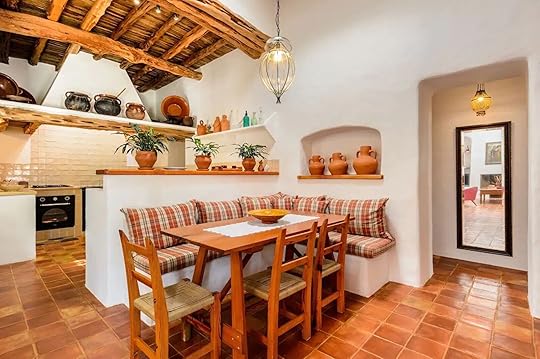 Photo: Airbnb
Photo: Airbnb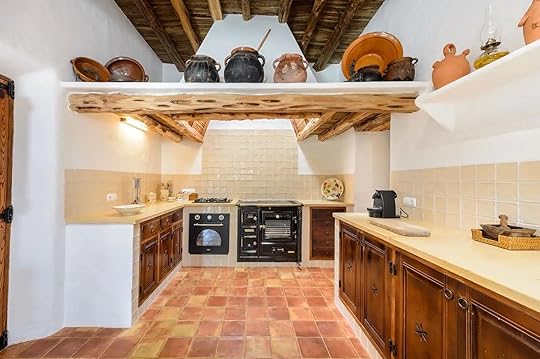 Photo: Airbnb
Photo: Airbnb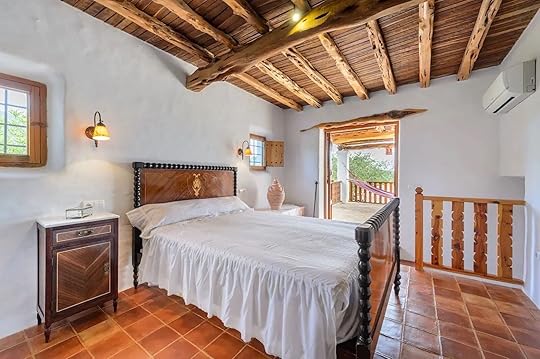 Photo: Airbnb
Photo: Airbnb Photo: Airbnb
Photo: Airbnb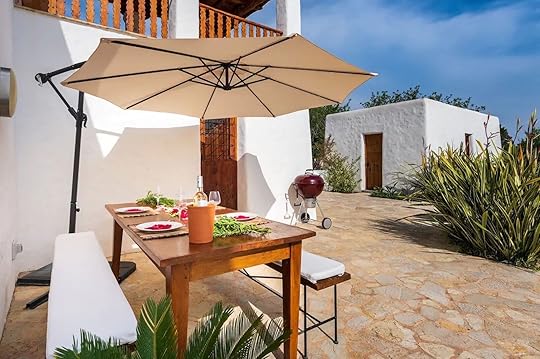 Photo: Airbnb
Photo: Airbnb Photo: AirbnbSee more photos
Photo: AirbnbSee more photosIf you’re looking for a quieter side of Ibiza, this authentic Ibizan home is located on a plot in Sant Llorenç de Balàfia on the northern side of the island where you’re guaranteed tranquility. The countryside setting showcases the best of what the island has to offer with both mountain views and nice nearby beaches. The Airbnb hosts manage the property from a neighboring unit, but guests are given sole access to the pool, solarium, lawn, and outdoor lounge area. Air conditioning in the upstairs bedroom — one of three — is a perk on hot summer days.
Three bedrooms, six guests
Price per night: $365
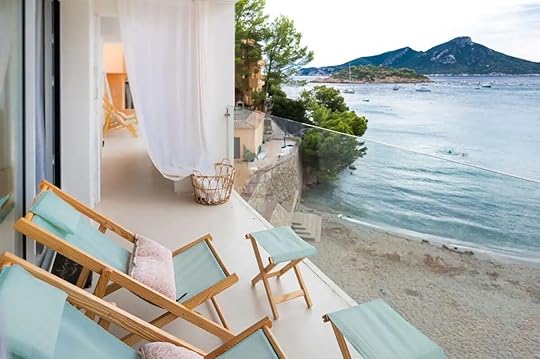 Photo: Airbnb
Photo: Airbnb Photo: Airbnb
Photo: Airbnb Photo: Airbnb
Photo: Airbnb Photo: Airbnb
Photo: Airbnb Photo: Airbnb
Photo: Airbnb Photo: Airbnb
Photo: Airbnb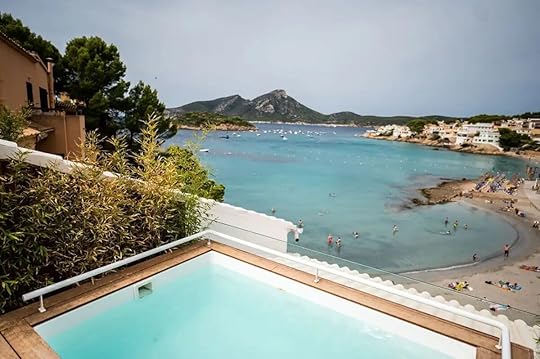 Photo: AirbnbSee more photos
Photo: AirbnbSee more photosThis oceanfront two-bedroom condo with direct beach access is probably what most travelers have in mind when they think about an Ibizan island getaway. You’ll love lounging on the terrace mere inches from the sand, relaxing in the open concept living and dining rooms, and exploring the village of San Telmo and nearby La Dragonera Natural Park when you’re not at home. Because the condo is located in a six-unit building, guests also have access to a shared pool and outdoor barbecue area, plus complimentary use of paddleboards and mountain bikes.
Two bedrooms, four guests
Price per night: $166
 Photo: Airbnb
Photo: Airbnb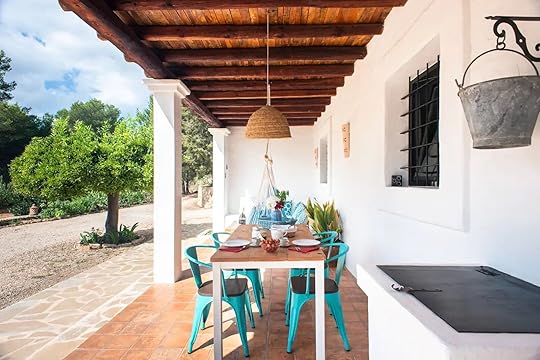 Photo: Airbnb
Photo: Airbnb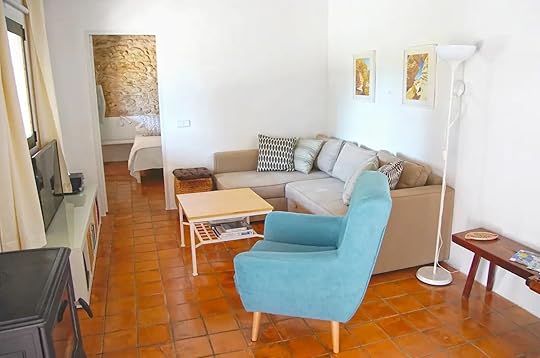 Photo: Airbnb
Photo: Airbnb Photo: Airbnb
Photo: Airbnb Photo: Airbnb
Photo: Airbnb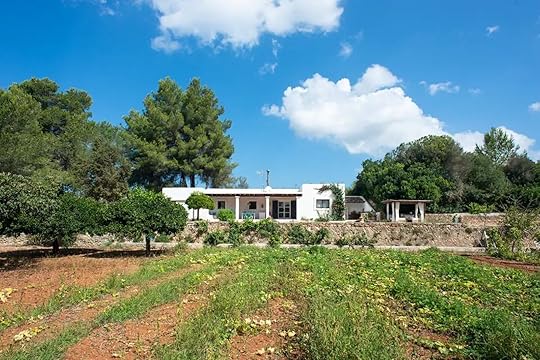 Photo: AirbnbSee more photos
Photo: AirbnbSee more photosSituated on 2.5 acres near the village of San Rafael, this two-bedroom cottage is ideal for nature-loving travelers, especially if you appreciate being surrounded by beautiful orange trees and a thriving organic garden. Other highlights of the property include a barbecue for sunny days, a fireplace for cozy nights, free parking, and complimentary bikes to get around the island. San Rafael has plenty of amenities, but the cottage is also just a few miles away from San Antonio’s picturesque bays, Santa Eulalia’s “hippie markets,” and Ibiza town’s nightlife.
Two bedrooms, four guests
Price per night: $1,369
 Photo: Airbnb
Photo: Airbnb Photo: Airbnb
Photo: Airbnb Photo: Airbnb
Photo: Airbnb Photo: Airbnb
Photo: Airbnb Photo: Airbnb
Photo: Airbnb Photo: Airbnb
Photo: Airbnb Photo: Airbnb
Photo: Airbnb Photo: AirbnbSee more photos
Photo: AirbnbSee more photosThe first thing you’ll notice about this luxurious villa is the pool — crystal-clear and surrounded by a wide-open patio with a variety of lounge seating to fit every mood. Look a little closer and you’ll find several enticing outdoor features, from the outdoor bar, grill, and dining table to the open-air shower. The interior is equally inviting — not to mention immaculate — with a cozy-chic aesthetic and modern appliances to make you feel both at home and pampered.
Three bedrooms, six guests
Price per night: $947
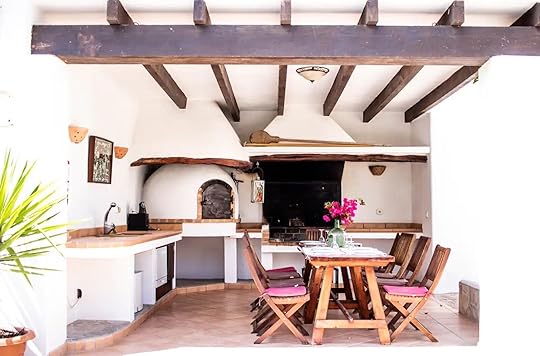 Photo: Airbnb
Photo: Airbnb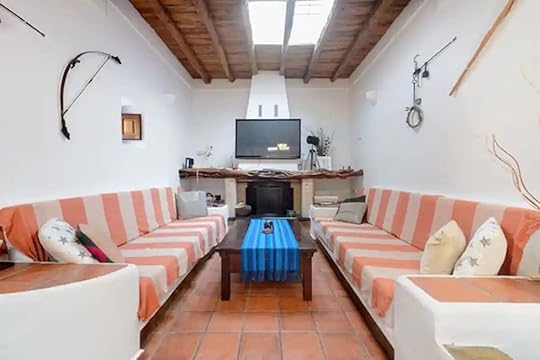 Photo: Airbnb
Photo: Airbnb Photo: Airbnb
Photo: Airbnb Photo: Airbnb
Photo: Airbnb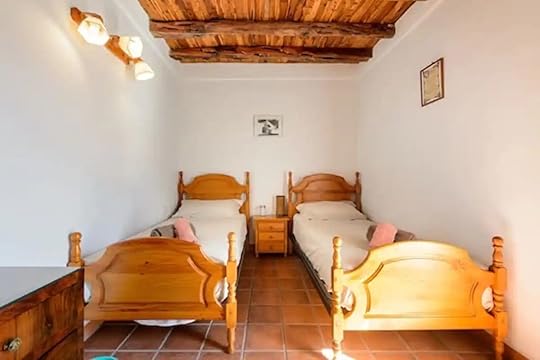 Photo: Airbnb
Photo: Airbnb Photo: Airbnb
Photo: Airbnb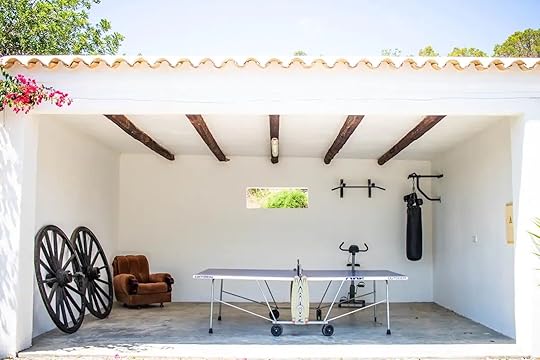 Photo: Airbnb
Photo: Airbnb Photo: AirbnbSee more photos
Photo: AirbnbSee more photosLocated between the villages of San Juan and San Miguel near beautiful Benirras beach, this four-bedroom villa houses guests in a 300-year-old farmhouse, or finca, that upholds its original charm while offering all the amenities modern travelers expect. The property is extensive — large enough to accommodate 10 guests between the two floors — with a variety of perks such as a private pool, jacuzzi, Mediterranean garden, and covered terrace for al fresco dining. The wealth of terraces, balconies, and other open spaces are perfect for morning yoga with a view.
Four bedrooms, 10 guests
Price per night: $568
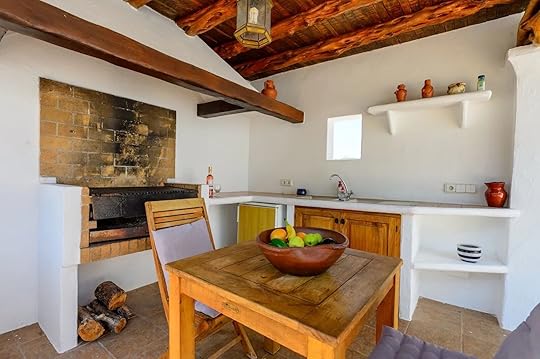 Photo: Airbnb
Photo: Airbnb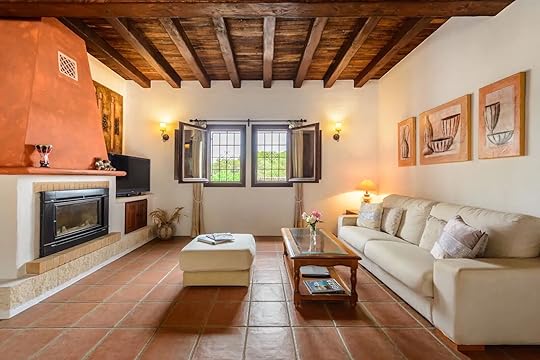 Photo: Airbnb
Photo: Airbnb Photo: Airbnb
Photo: Airbnb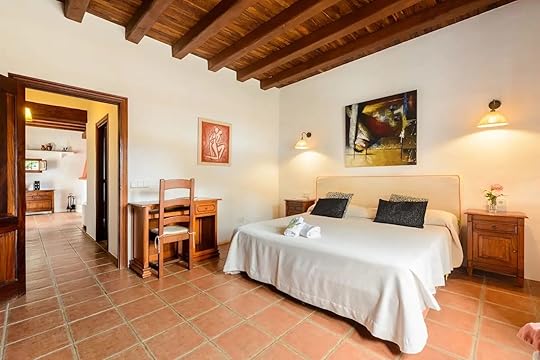 Photo: Airbnb
Photo: Airbnb Photo: Airbnb
Photo: Airbnb Photo: AirbnbSee more photos
Photo: AirbnbSee more photosThis one-level, one-bedroom villa is the perfect couple’s retreat in Ibiza. It’s located in a quiet area that’s close to popular parts of the island such as Santa Eulalia, Sant Carles de Peralta, and the Cala Martina and Cala Pada beaches. The charming property is spacious yet cozy for two travelers, especially when you factor in the private pool, barbecue area, and two covered areas where you could share a meal outside. A free parking spot is included. 
One bedroom, two guests
Price per night: $409
The Katla Ice Caves Are the Most Epic Way To Explore Iceland’s Wintry Beauty
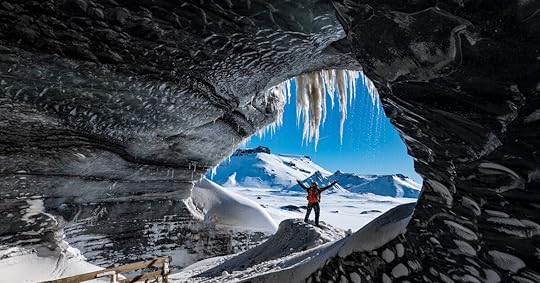
Iceland is known for its dramatic mountains, highlands, black sand beaches, and fjords, but its ice caves (if you can believe it) tend to fly under the radar. The Katla Ice Caves in the southern part of the country are among Iceland’s coolest (literally) natural wonders. Located beneath the mighty Mýrdalsjökull glacier, these ice caves are within the volcanic caldera of Katla volcano, creating a surreal landscape where fire and ice coexist.
Getting there is a bit more difficult than simply booking your own car and hitting the road. You’ll need to take a guided tour in a Super Jeep, a vehicle specially equipped to handle the rugged and icy terrain. As you traverse the black sand plains of Mýrdalsjökull, the vast expanse of the glacier begins to unfold, a sight that is both awe-inspiring and humbling. The drive itself is an adventure, offering stunning views of Iceland’s stark, unspoiled beauty.
Reaching the entrance of the cave is when the real exploration begins. Equipped with a helmet and crampons for safety, you descend into a world of ethereal beauty. The cave’s interior is truly a spectacle, with walls of translucent ice that shimmer in hues of blue and white. The intricate patterns formed by centuries of freezing and thawing create an otherworldly ambiance that’ll make you feel like you’re beyond the Wall in Game of Thrones.
One of the special aspects of the Katla Ice Caves is their dynamic and changeable nature. The caves are formed by the geothermal heat from the Katla volcano, which causes the glacier to melt and refreeze, continuously reshaping the caves. This means that no two visits to the cave are ever the same, as the landscape is constantly evolving. It’s a great reminder of the powerful natural forces at work beneath our feet. 
Matador Network's Blog
- Matador Network's profile
- 6 followers





